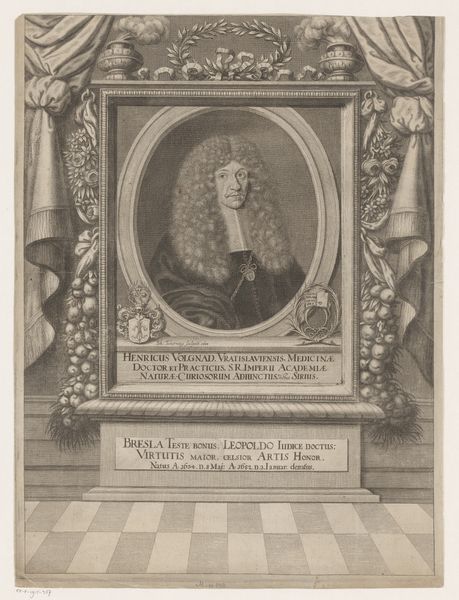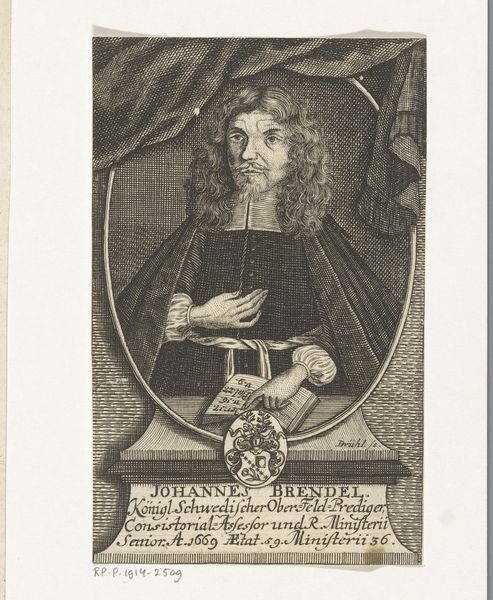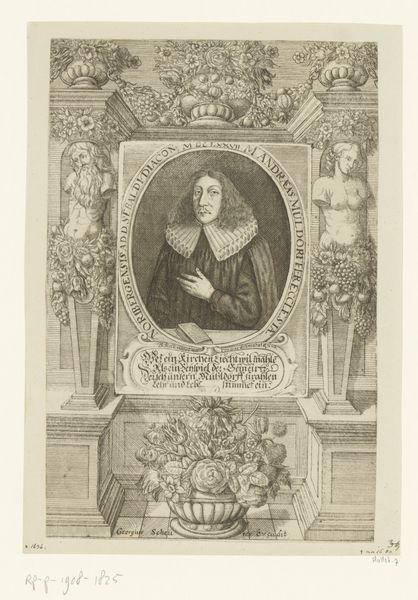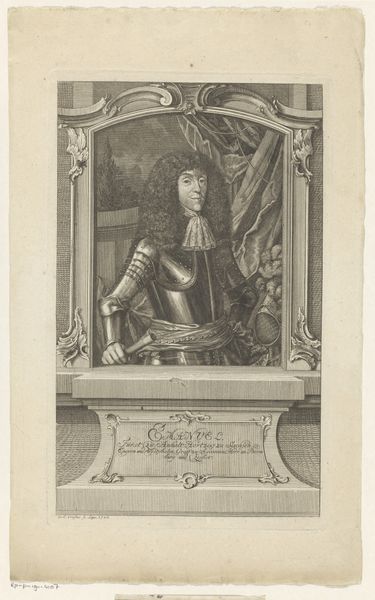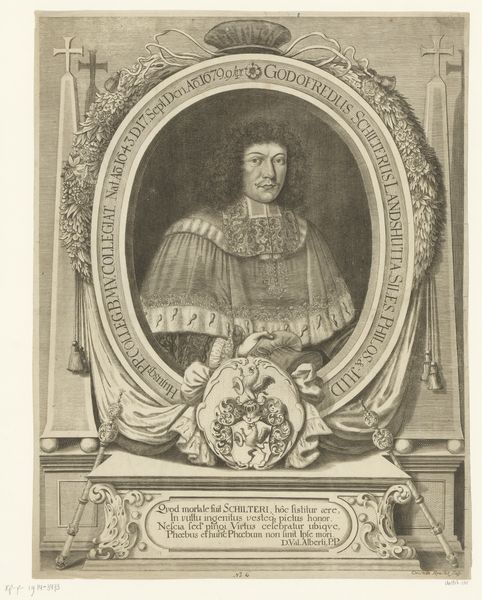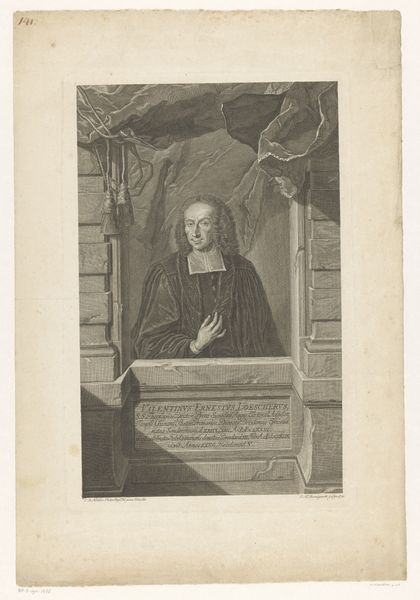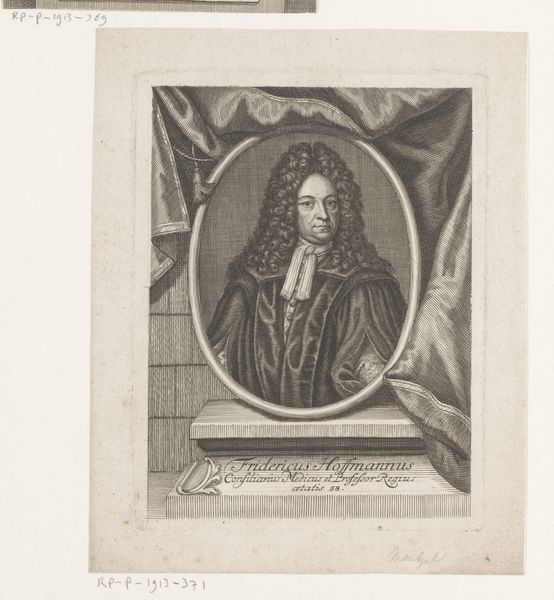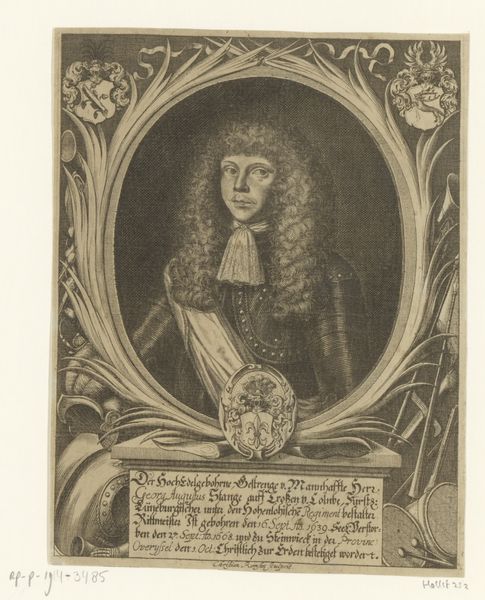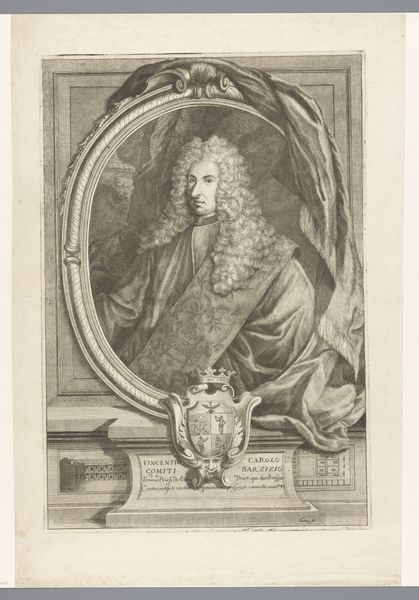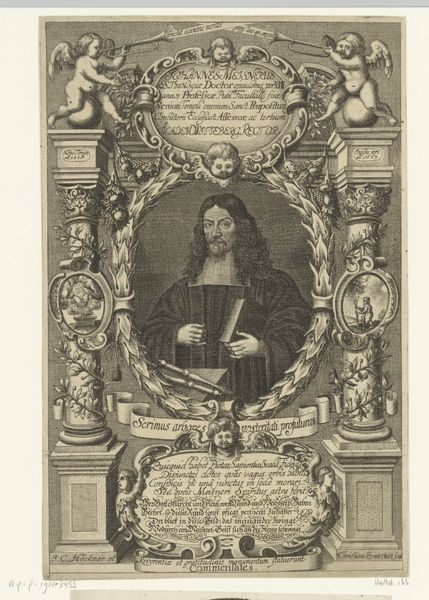
drawing, print, engraving
#
portrait
#
drawing
#
aged paper
#
toned paper
#
baroque
# print
#
old engraving style
#
caricature
#
portrait drawing
#
engraving
Dimensions: height 308 mm, width 185 mm
Copyright: Rijks Museum: Open Domain
This is a portrait of Johann Schwiggen, made by Christian Romstet, using etching, sometime between 1640 and 1721. The piece gives us a glimpse into the visual language of status and authority in the Holy Roman Empire. Note the trappings of power surrounding Schwiggen. The elaborate frame, the Latin inscription detailing his titles – Superintendent, Assessor of the Consistory, and Chief Custos – all work to construct an image of erudition and importance. The flowing wig, itself a costly status symbol, further enhances this impression. This isn't just a likeness; it's a carefully constructed statement about Schwiggen's place in the social and religious hierarchy. Understanding this image requires that we look at the conventions of portraiture at the time, and the specific institutions that gave Schwiggen his authority. Religious archives and local histories would give us an even deeper understanding of this figure and the world he inhabited.
Comments
No comments
Be the first to comment and join the conversation on the ultimate creative platform.
